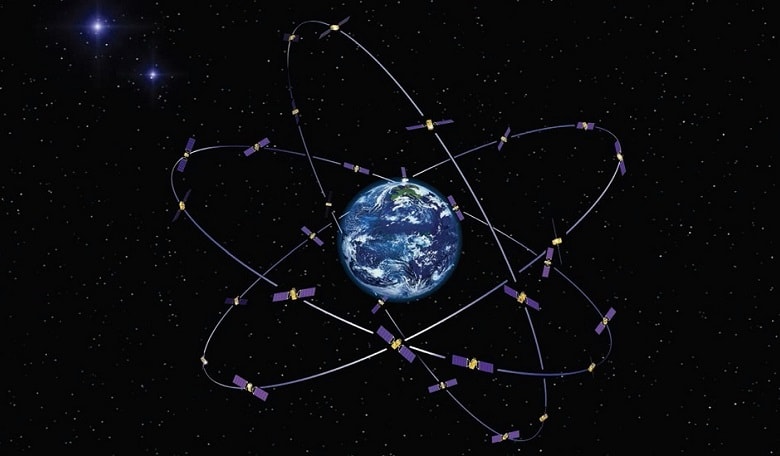Global reliance on satellite-based technology to receive and transmit information has never been so great. The complex satellite infrastructure and advanced threat landscape means securing these assets remains a challenging but absolutely vital task.
In April 2014 for the first time the United Kingdom government released a National Space Security Policy,1 which acknowledged that space assets are a critical part of the national infrastructure and that securing them is essential for prosperity.
However, there is a more profound dependence: capabilities that rely on space-based systems are woven into the fabric of modern society, cultural engagement and social well-being. It is often not appreciated just how much sustained technological advancement and, thus, socio-economic growth, depends on modern satellite-based services and systems.
International economic credibility also relies on secure access to space services. The global space economy is expanding rapidly and is reckoned to have generated ?180 billion in commercial revenue and government budgets in 2012.2
However, there are now more than 60 nations with credible space capabilities, and the operational domain is becoming congested, contested and subject to a suite of threats, hazards and vulnerabilities, which must be understood and dealt with in order to build confidence in society, industry and governments.
Motive for vigilance
Sectors that rely on space technology now include climate and natural disaster monitoring, early warning systems, global broadcasting, meteorology, navigation, reconnaissance, remote sensing, surveillance and the advancement of science and fundamental understanding.
Services also have a central role in mobile communication, telemedicine, tracking, pointof- sale transactions and internet access. Governments, public and commercial users are all dependent on secure, safe and seamless access to satellite capabilities to improve safety, broadcast television and radio and grow the economy.
So which services have become parts of national infrastructure? The global navigation satellite system (GNSS) is an obvious example. Satellite networks provide the ability to allow instant credit card authorisation and automated banking services. Satellites can view remote terrain, whatever the geography or the climate. This is critical for national disaster reaction, emergency response and environmental cleanup, as are communications services for first responders.
Data is increasingly important to the developing world; access to the internet can provide medical expertise, education and resource management. Space services can provide communications services without the requirement for extensive national infrastructure, leading to sustainable and rapid growth in these emerging markets.
The armed forces have long used satellite imagery, communications and GNSS. Today, the demand for space services is expanding exponentially, with many nations relying on commercial providers to supplement services provided by dedicated military satellites.
Threats, hazards and vulnerabilities
Threats to operational satellite systems are diverse, emanating from a range of sources, including independent actors, non-state entities and sovereign nations. Key technological threats to both the ground and space segments include: • radiation environment; • bandwidth interference (e.g. denial of service, piracy, jamming, spoofing, lasers); • military threats (e.g. anti-satellite weapons (ASAT), high-altitude nuclear explosion); • cyber attack; • space debris/space debris removal programmes; • signal intercept; • supply chain compromise.
The severity of these threats varies. For example, the radiation environment in which satellites operate is inherently harsh. However, advances in materials science and satellite design have meant that the operational lifetime of a satellite in geostationary orbit, assuming no extraordinary solar activity, is determined more by its ability to remain correctly pointed, than by its resilience to environmental conditions.
Space debris is of growing concern. Ranging from discarded rocket bodies to tiny pieces of shrapnel, each object poses a threat to active assets and could compromise missions. While there is no formal policy to clean up the material, both industry and government are examining options to remove particularly threatening ‘junk’ from orbit. However, these technologies in themselves pose a risk to active satellites if deployed in an aggressive fashion.
Deliberate kinetic threats in the space domain are limited to a small number of states. In 2007, China successfully destroyed its Fengyun 1C satellite, in the process creating more than 3,000 trackable items of debris. The action was strongly condemned, but this has not stopped nations developing ASAT weaponry.
A report recently published by The Space Review3 claimed that a recent Chinese launch of a scientific research mission was actually a test of a ballistic missile related to China’s ASAT programme. While this cannot be confirmed, kinetic weaponry of this kind creates catastrophic debris clouds and is met with unanimous international disapproval.
Cyber security
Cyber security of satellite systems is extensive and involves telemetry, tracking and command (TT&C) links, communication ground stations (which often extensively network into terrestrial infrastructure), uplinks and downlinks from these ground stations, the satellites in orbit and the supply chain.
Cyber intrusions are often difficult to attribute, and the rules of engagement and the legal framework are embryonic in thinking. Traditionally the ground stations and Earth segments of the satellite communication network are most vulnerable to compromise. Due to the need for agility and flexibility these control systems are often connected to the wider internet, imposing a cyber security risk to the data traversing the network, and the hardware assets themselves. A layered approach to physical and soft security is necessary to safeguard the vital information stored at command centres.
As computer power increases, so does the threat posed to cyber security. Since a 2011 report4 by the US-China Economic and Security Review Commission showed that a United States satellite had its TT&C targeted, the evolution of cyber threats to satellites has grown considerably and presents one of the main threats to prosperity in space.
The TT&C links are heavily encrypted, at multiple layers of the network, as they possess the link to manipulate the satellites’ core management functions such as propellant, solar arrays and power. Compromise of the TT&C often leads to devastating effects, rendering the satellite ineffective or inoperable. States have the greatest resources to compromise satellites, but they also have the most to lose. Non-state entities may wish to take advantage of the asymmetric benefits to satellite hacking. Intercepting satellite traffic and jamming satellites is more rudimentary and can be performed by lone actors through commercially available off-the-shelf products.
These types of cyber compromise are more widely seen within the satellite community – bandwidth compromise and jamming in particular are of grave concern to commercial and government operators as they have an impact on revenues and operational tempo.
The space sector will inevitably fly more complex electronics, such as IP-based and regenerative payloads, which could enhance functionality and reduce threats. However, these capabilities introduce attack surfaces, which potentially could be electronically exploited.
Cyber security will be an increasingly important element of future satellite systems and it is, therefore, imperative that they are secured effectively. This is particularly important in the commercial sector, which has not traditionally needed to develop robust platforms and ground control systems.
Building resilience
System resilience and redundancy are two key features of threat mitigation, which are actively practised by both procurers and operators of satellites. However, the concept of redundancy, in particular, must be treated with careful thought. In certain circumstances redundancy can lead to new avenues for exploitation and expose attack vectors.
Resilience is not just technological, but also involves legal and regulatory challenges. International norms for responsible and accountable behaviour are being addressed through the EU International Code of Conduct for Outer Space Activities.5 National and international treaties and intelligence sharing, such as the Space Situational Awareness Programme, must be improved as it forms a central backbone to guaranteeing space as a global common and securing integrity in the international system.
International collaboration
Securing satellite systems requires a holistic and unified approach. The satellite ecosystem is typically only as secure as the weakest link – whether that is technological, legal or political.
Uncertainty can surround many risks and threats depending on, for example, cost and design of the system, orbital position, deployed usage and infrastructure. What is certain, however, is that international collaboration and co-ordination is vital to ensure the longevity of operations in space, and critical for maintaining the peaceful exploitation of space.
Efforts to improve space situational awareness, attempts by the UN’s International Telecommunications Union to ensure that orbits do not conflict, the building of more robust commercial satellites to prevent jamming, and the removal of space debris are all important.
A prosperous and thriving space sector is critical to socio-economic development and international security; any significant disruption to satellite services would cause lasting damage. Efforts are under way in a number of areas to mitigate some of the threats to space services. But these often require international collaboration and are not easy to solve.














